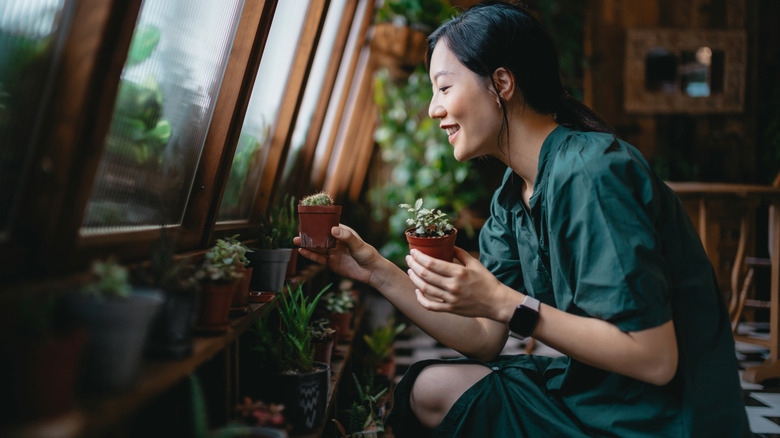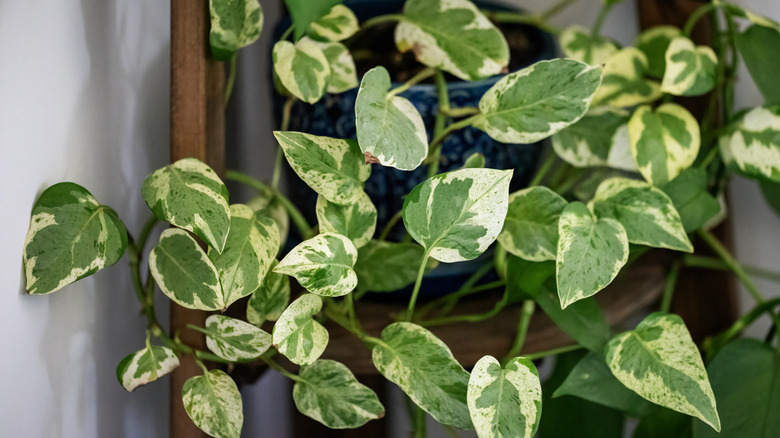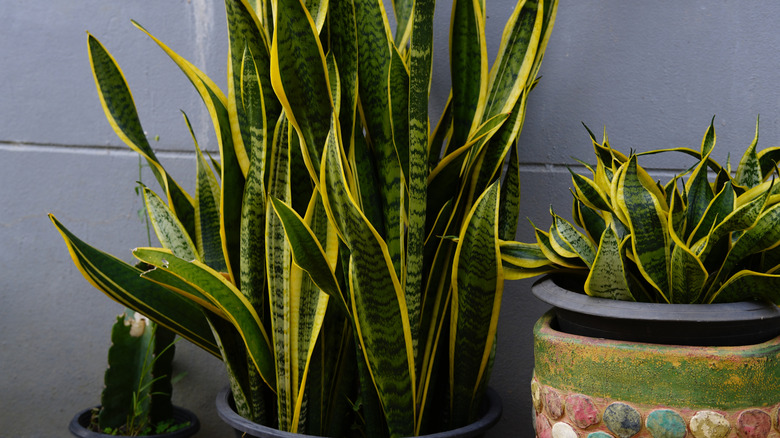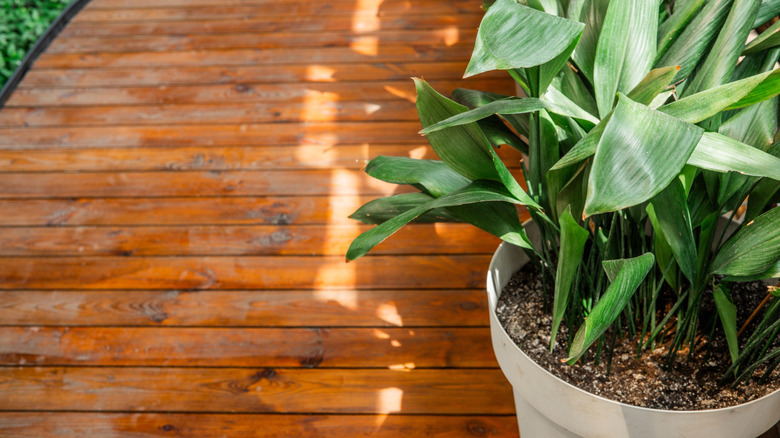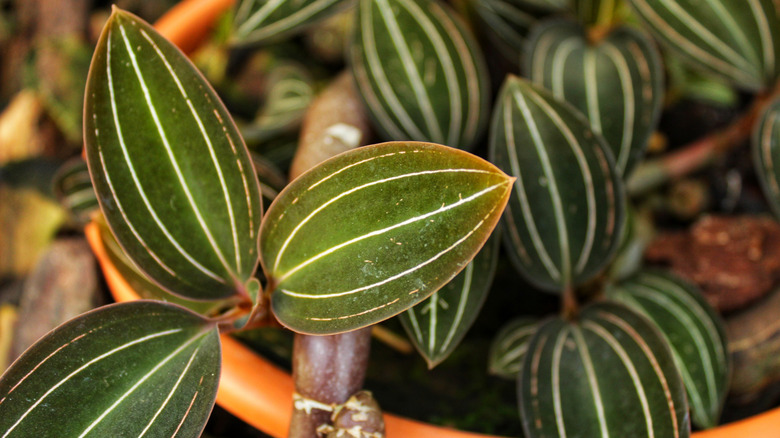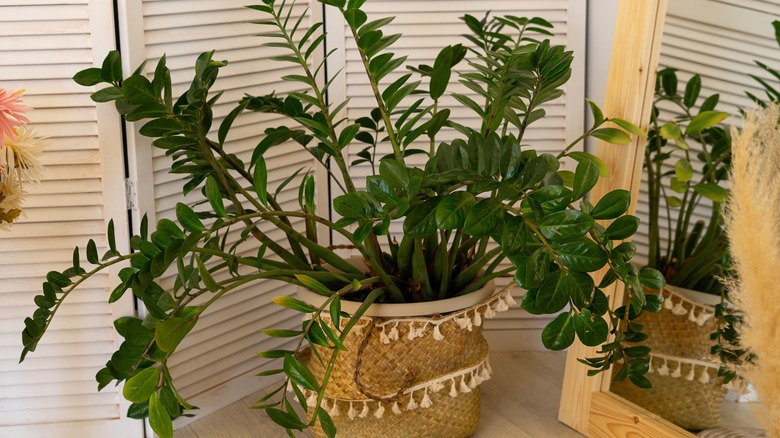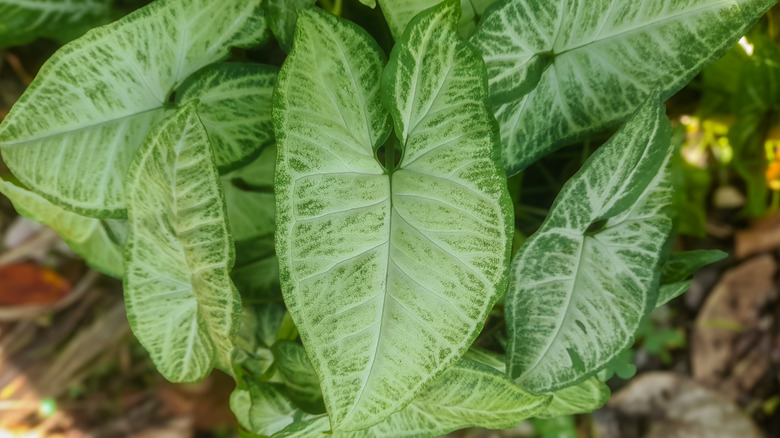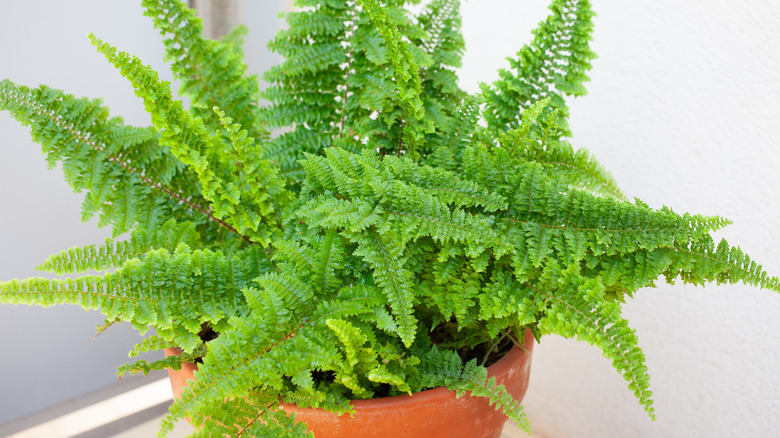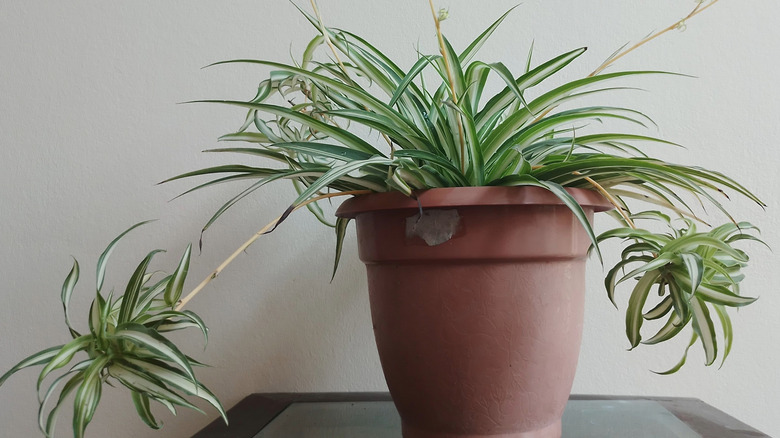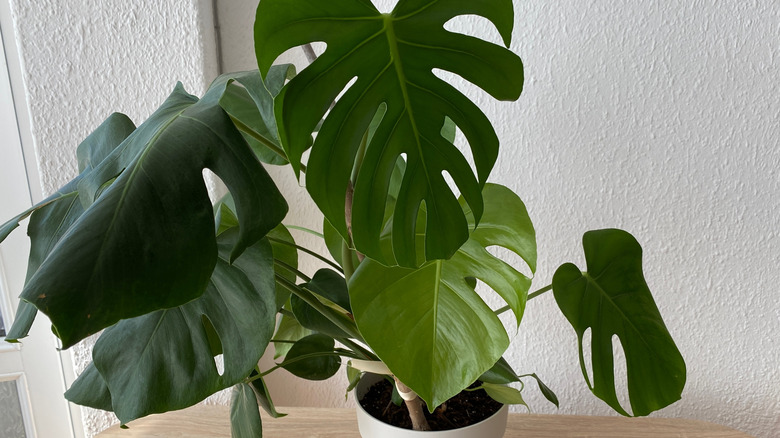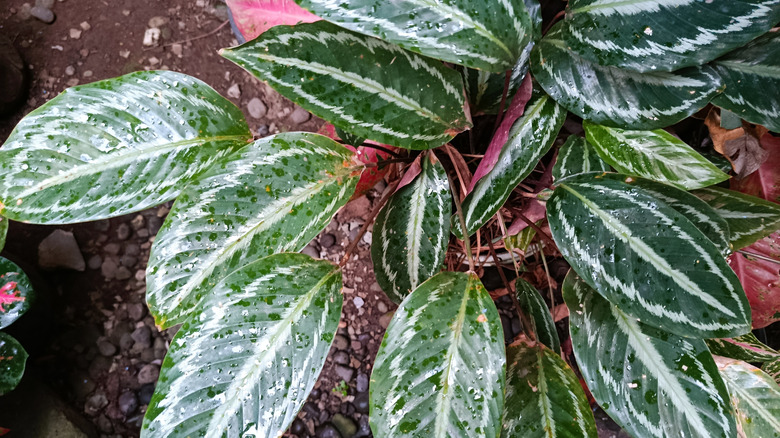10 Houseplants You Can Grow Without A Ton Of Natural Light
Many apartment dwellers long for the look of a lush green collection of houseplants, but simply don't have the huge, sun-facing windows necessary to keep many of the sun-loving species of plants. Luckily, there are a wide variety of commonly available houseplants — pothos, jewel orchids, calatheas, and more — that are happy to grow in low-light areas. Better yet, while there are some that do have some fussier care needs, the lion's share on this list are fairly foolproof selections.
Although quite diverse in appearance, you'll notice that many of these plants have some traits in common. A large percentage of low-light houseplants are "understory" plants in their native habitat, growing beneath the shade of larger plants and trees. Additionally, many — though not all! — have darker colored leaves; the dark hue indicates a greater presence of chlorophyll, which enables plants to capture as much available light as possible. Some just have high "plasticity," or adaptability, and are able to survive and thrive in a wide variety of conditions.
Golden pothos
You've probably seen this tropical ivy houseplant growing in offices, homes, and cafés, but golden pothos (Epipremmum aureum) is classic. It does well in the indirect light of indoor settings and can even survive low light for quite a while — just make sure not to over- or under-water it (best to err on the side of too little). There are cultivars available that feature varying leaf colors; some are more suited to darkness than others. However, it's toxic to cats and dogs, so if your pets tend to nibble your plants, keep this one out of reach.
Snake plant
If you long to bring some greenery indoors but have a tendency to neglect houseplants, then the hardy and unfussy snake plant (Dracaena trifasciata) might just be the perfect choice for you. Even if your home has few windows and only a small amount of light, a snake plant will thrive, so long as you provide it with well-draining soil and don't overwater it. It's easy to propagate by division, so you can fill your home with snake plants or share cuttings with your friends. Note that it spreads easily in warm climates outdoors and can become invasive.
Cast-iron plant
The cast-iron plant (Aspidistra elatior) is pretty close to impossible to kill — in fact, one of its common names is "beer plant," due to its ubiquity in 19th century barrooms, where it would often be watered with leftover beer. An evergreen understory plant at home in deep shade (too much sun will actually cause the leaves to look faded), the cast-iron plant is long lived with regular watering, particularly during its spring-to-fall growing season. It has the added benefit of being among the best oxygen house plants, so it's the perfect choice for a small, dark city apartment.
Jewel orchid
Jewel orchids (Ludisia discolor) are unique for a few reasons: For one thing, unlike most orchids — which are epiphytes that grow on other plants or surfaces — jewel orchids are terrestrial, growing with their roots in the ground. For another, they're prized for their eye-catching foliage rather than their small white flowers. They do well in indirect light or partial shade, and generally are easy to care for as long as they're provided with a warm room and consistent watering. They tend to like humidity, so a bathroom near the shower might be a great location.
ZZ plant
The ZZ plant (Zamioculcas zamiifolia) is an aroid from the dry, shady forests of eastern Africa that is quite comfortable weathering drought and other hardships — in fact, you're more likely to kill a ZZ plant through overwatering and fussing than through neglect. It doesn't require frequent fertilization and will happily live in indirect light or even very low light. Water it once every week or two, but make sure its roots don't get soggy or you'll risk root rot. This is another selection that's toxic if consumed, so keep it away from pets and young children.
Arrowhead vine
Also known as American evergreen, arrowhead vine (Syngonium podophyllum) is a low-lift selection that can grow in either partial sun or shade (though dark-leaved varieties tend to be more shade tolerant). Water this plant once a week or whenever the top few inches of soil are dry, especially in summer — but be careful not to overwater. This tropical perennial likes a humid environment, so it's another good choice for a bathroom or even a kitchen. One caveat: Make sure your arrowhead vine stays an indoor plant and doesn't escape, as it's considered invasive in some warmer climates.
Boston fern
Nothing says "shade friendly" like a fern — and the grand, ruffly Boston fern (Nephrolepis exaltata) is an excellent indoor selection. Better yet, if you have plant-nibbling pets, the Boston fern is nontoxic – so you won't have to worry too much about keeping it out of reach. Although it's among the more drought-tolerant ferns, it does need humidity and constantly moist soil. If you can't place it in a bathroom or kitchen or near a humidifier, try setting it atop a tray of wet pebbles. Reduce watering during its winter dormancy season to avoid root rot.
Spider plant
Another selection on the list of nontoxic houseplants that favor indirect light is the popular spider plant (Chlorophytum comosum) — a great choice for beginners or those whose busy schedules won't allow for fussy plants. Its thick roots and rhizomes have evolved to store water, so it can easily withstand drought and neglect (though ideally, it does prefer its soil to be kept moist during its spring and summer growing season). If you see its leaf tips getting burnt or crispy, try using distilled water or rain water, as high fluoride or chlorine may be to blame.
Swiss cheese plant
You may also know this iconic (and highly Instagrammable) plant as monstera (Monstera deliciosa) or split-leaf philodendron, though it isn't actually a philodendron. This Central American houseplant can grow to towering heights with leaves up to 36 inches wide in its native habitat, though it tends to stay below 8 feet or so indoors. As a climbing vine, it will need to be staked or provided with some other support. It likes indirect light indoors and can tolerate growing under fluorescent light alone, but its leaves might not have those perfect perforations if the light is inadequate.
Calathea
Striking and pet-friendly calatheas (Calathea spp.) are available in over 60 species and cultivars, all with leaves that move throughout the day according to circadian rhythm. Calatheas can grow happily in low-light conditions, though they do require a bit more care than other houseplants. They like high humidity and moist soil that isn't too wet, which can be a bit difficult to get just right for the beginning plant parent — a soil moisture meter can be a great help. They're also quite sensitive to hard water, so you may need to stick with distilled bottled water in some areas.
